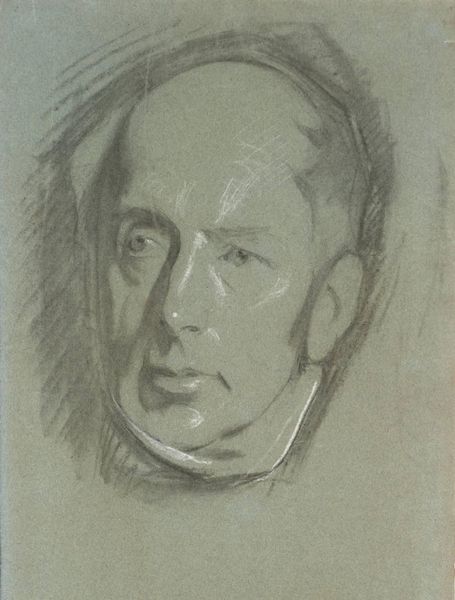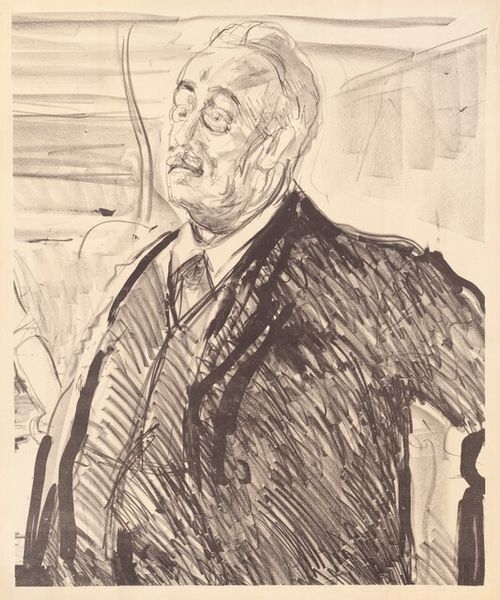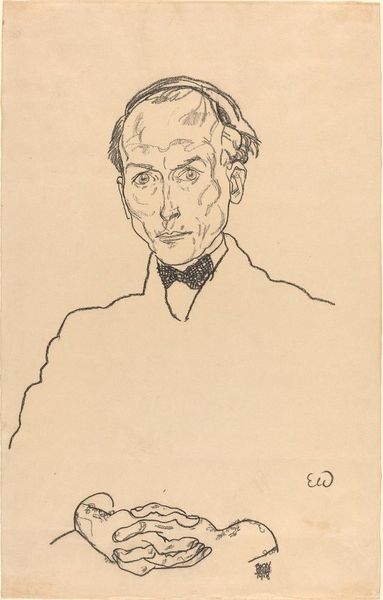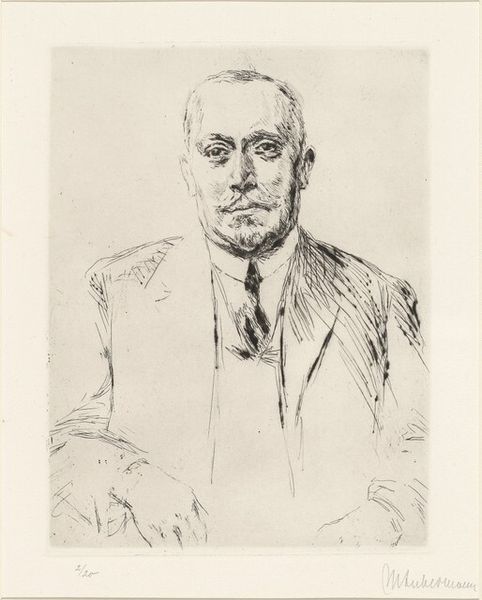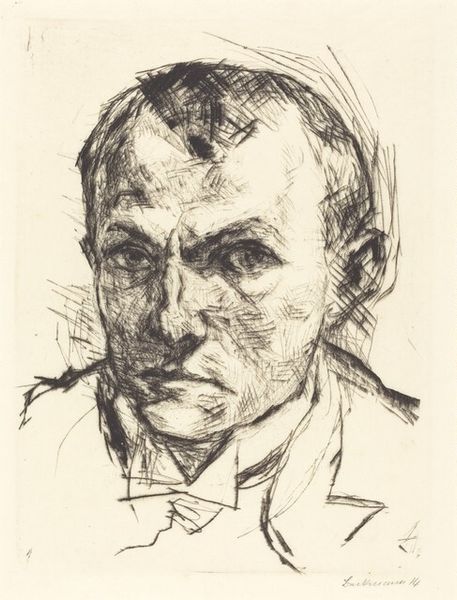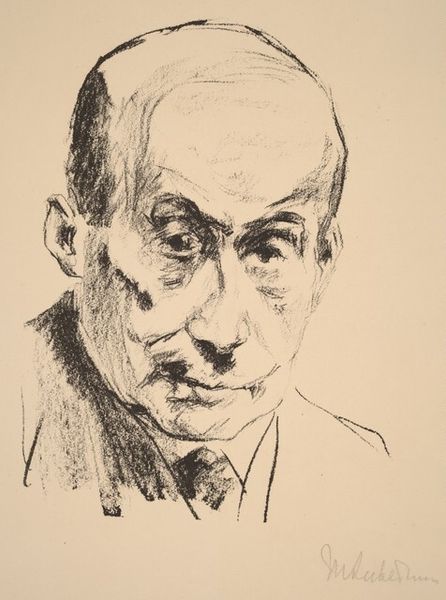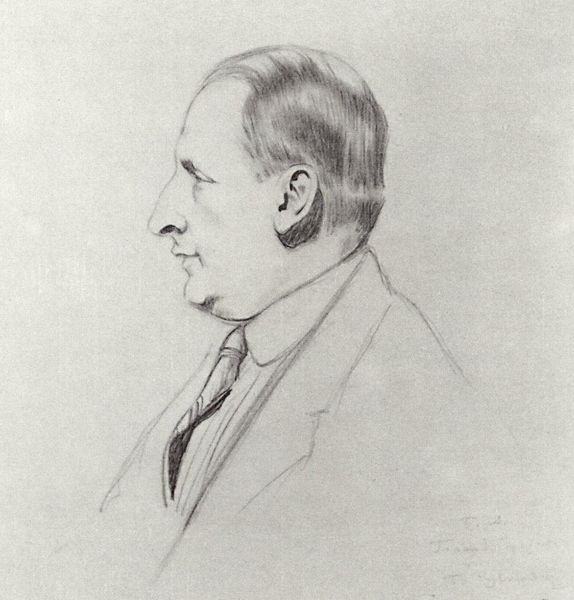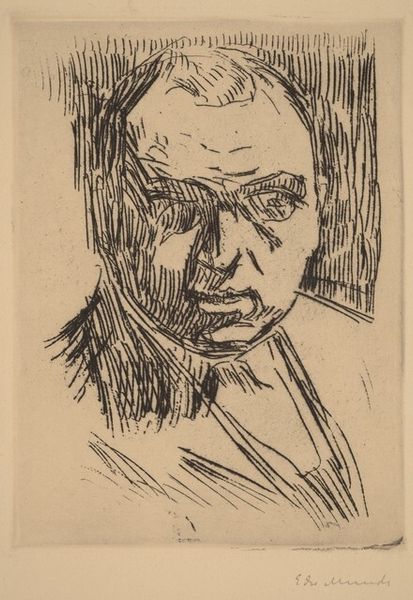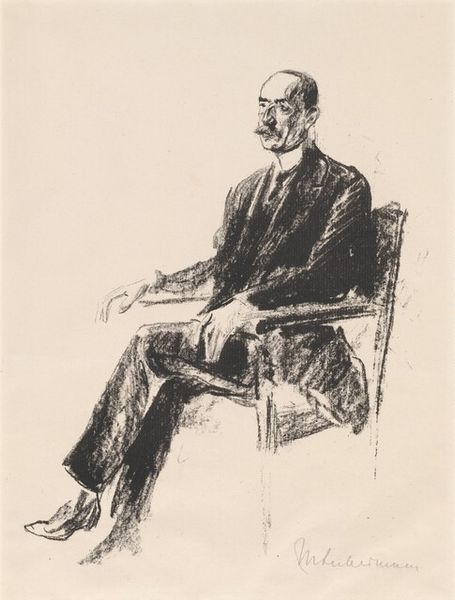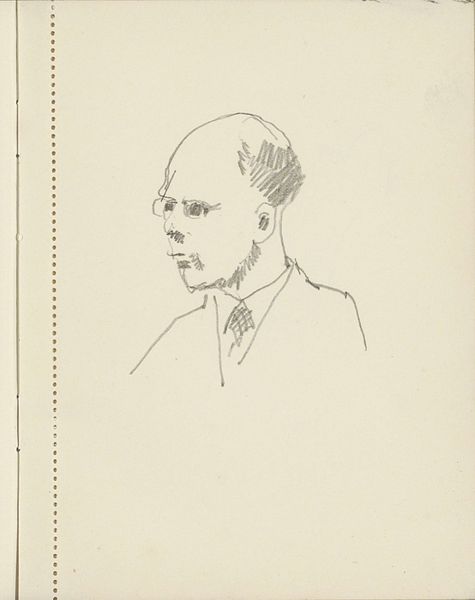
drawing, print, pencil
#
portrait
#
pencil drawn
#
drawing
# print
#
pencil drawing
#
pencil
#
expressionism
#
portrait drawing
Dimensions: framed: 90.17 × 76.2 × 2.54 cm (35 1/2 × 30 × 1 in.)
Copyright: National Gallery of Art: CC0 1.0
Curator: This compelling pencil drawing, crafted by Edvard Munch around 1920, offers us a glimpse into the soul of the composer Frederick Delius. Editor: My first impression? Melancholy. It feels like gazing upon a fading melody, doesn't it? All those gray strokes capture the gravity of time itself, like notes slowly fading into silence. Curator: It’s the texture, isn't it? Look closely at the layered pencil work. You see how Munch uses short, broken lines to build form, capturing Delius’s introspective mood, rather than a perfect likeness. His Expressionistic style really digs beneath the surface. Editor: Absolutely! Those expressive lines— almost vibrating with feeling— definitely pull you into Delius' inner world. And consider the composition; that tightly framed image gives this feeling of compression or maybe internal focus, wouldn't you say? It's not merely a depiction but an evocation. Curator: Exactly. And that's very Expressionist: it bypasses the external and grasps the essence. It feels incredibly honest, stark even, refusing idealization. One can see the heavy lines under his eyes suggesting some form of sadness. I wonder if it was something both artist and composer had in common? Editor: Hmm, a somber resonance, perhaps? Think of the stark beauty within Delius's music... a shared understanding maybe that raw emotion, unfiltered, *is* beauty. Curator: It certainly resonates here! So, reflecting on this, the image lingers like a sustained chord; mournful, but deeply human. Editor: Indeed. Munch captured more than a likeness. He handed us a shared moment of profound artistic understanding, across mediums. That’s quite something, wouldn’t you say?
Comments
No comments
Be the first to comment and join the conversation on the ultimate creative platform.
